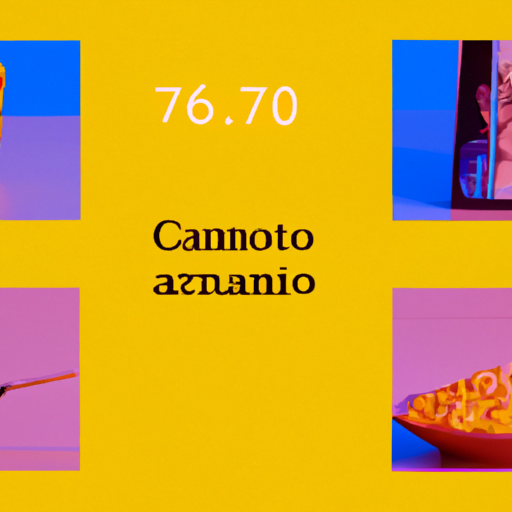
-
Table of Contents
- Exploring the Power of Cinemagraphs in Visual Storytelling
- What are Cinemagraphs?
- The Power of Cinemagraphs in Visual Storytelling
- Successful Examples of Cinemagraphs in Visual Storytelling
- 1. Coca-Cola’s “Taste the Feeling” Campaign
- 2. Airbnb’s “Live There” Campaign
- 3. Netflix’s “Stranger Things” Promotion
- How to Create Compelling Cinemagraphs
- Conclusion
Exploring the Power of Cinemagraphs in Visual Storytelling

Visual storytelling has become an essential tool for marketers and content creators in today’s digital age. With the rise of social media platforms and the increasing demand for engaging content, it is crucial to find innovative ways to capture and hold the attention of the audience. One such technique that has gained significant popularity is the use of cinemagraphs.
What are Cinemagraphs?
Cinemagraphs are a unique form of visual content that combines elements of both photography and video. They are essentially still photographs with subtle, repeated movements that create a mesmerizing effect. Unlike traditional videos or GIFs, cinemagraphs focus on a specific area or element within the frame, making them more captivating and immersive.
These captivating visuals are created by capturing a short video clip and then isolating a specific portion of it to loop seamlessly. The result is a visually stunning image that appears to be a static photograph with a touch of life. This combination of motion and stillness creates a powerful storytelling tool that can evoke emotions and engage viewers in a way that traditional static images cannot.
The Power of Cinemagraphs in Visual Storytelling
Cinemagraphs have the ability to captivate and engage viewers in a way that other forms of visual content cannot. Here are some reasons why cinemagraphs are a powerful tool in visual storytelling:
- Attention-Grabbing: Cinemagraphs have a unique ability to catch the viewer’s attention and hold it for longer periods compared to static images or videos. The subtle movements within the cinemagraph create a sense of curiosity and intrigue, making viewers more likely to stop scrolling and pay attention to the content.
- Emotional Impact: The combination of motion and stillness in cinemagraphs allows for the creation of powerful emotional experiences. By isolating a specific element or area within the frame, cinemagraphs can draw attention to the most important aspects of the story, evoking specific emotions in the viewer.
- Storytelling Potential: Cinemagraphs have the ability to tell a story in a single frame. By carefully selecting the subject and the movement within the cinemagraph, content creators can convey a narrative or evoke a specific mood without the need for a lengthy video or series of images.
- Increased Engagement: Studies have shown that cinemagraphs generate higher engagement rates compared to static images or videos. According to a study by Facebook, cinemagraphs have a 71% higher click-through rate and a 58% higher engagement rate compared to static images.
- Brand Differentiation: In a crowded digital landscape, it is crucial for brands to stand out and differentiate themselves. By incorporating cinemagraphs into their visual content strategy, brands can create a unique and memorable experience for their audience, helping them to stand out from the competition.
Successful Examples of Cinemagraphs in Visual Storytelling
Several brands and content creators have successfully utilized cinemagraphs to enhance their visual storytelling. Let’s explore some notable examples:
1. Coca-Cola’s “Taste the Feeling” Campaign
Coca-Cola’s “Taste the Feeling” campaign featured a series of cinemagraphs that captured the essence of enjoying a Coke. The cinemagraphs showcased the iconic red Coca-Cola bottle with subtle movements, such as bubbles rising or condensation forming on the bottle. These cinemagraphs created a sense of refreshment and joy, effectively conveying the brand’s message.
2. Airbnb’s “Live There” Campaign
Airbnb’s “Live There” campaign aimed to promote the idea of experiencing a destination like a local. The campaign featured cinemagraphs that showcased various cities around the world, highlighting specific elements that represented the local culture. For example, a cinemagraph of Paris showed a still image of the Eiffel Tower with only the blinking lights in motion, creating a sense of being immersed in the city’s vibrant atmosphere.
3. Netflix’s “Stranger Things” Promotion
Netflix’s promotion for the hit series “Stranger Things” included a series of cinemagraphs that captured the eerie and mysterious atmosphere of the show. These cinemagraphs featured scenes from the series with subtle movements, such as flickering lights or floating particles. The cinemagraphs effectively conveyed the show’s unique aesthetic and generated excitement among viewers.
How to Create Compelling Cinemagraphs
Creating compelling cinemagraphs requires careful planning and execution. Here are some steps to help you create visually stunning cinemagraphs:
- Choose the Right Subject: Select a subject that is visually interesting and has the potential for subtle movements. This could be anything from a person’s facial expression to a flowing river.
- Capture High-Quality Video: Use a high-quality camera or smartphone to capture a short video clip of the subject. Ensure that the video is stable and well-lit.
- Identify the Looping Element: Determine the specific area or element within the video that will be looped. This could be a moving object or a specific part of the frame.
- Edit and Loop the Video: Use video editing software or specialized cinemagraph tools to isolate the looping element and create a seamless loop. Adjust the speed and duration of the loop to achieve the desired effect.
- Export and Optimize: Export the cinemagraph in a suitable format and optimize it for web or social media platforms. Consider file size and resolution to ensure fast loading times without compromising quality.
Conclusion
Cinemagraphs have emerged as a powerful tool in visual storytelling, offering a unique and captivating way to engage viewers. With their attention-grabbing nature, emotional impact, and storytelling potential, cinemagraphs have become a popular choice for brands and content creators looking to stand out in a crowded digital landscape. By incorporating cinemagraphs into their visual content strategy, brands can create memorable experiences and increase audience engagement. As technology continues to advance, we can expect cinemagraphs to play an even more significant role in visual storytelling, pushing the boundaries of creativity and captivating audiences worldwide.
